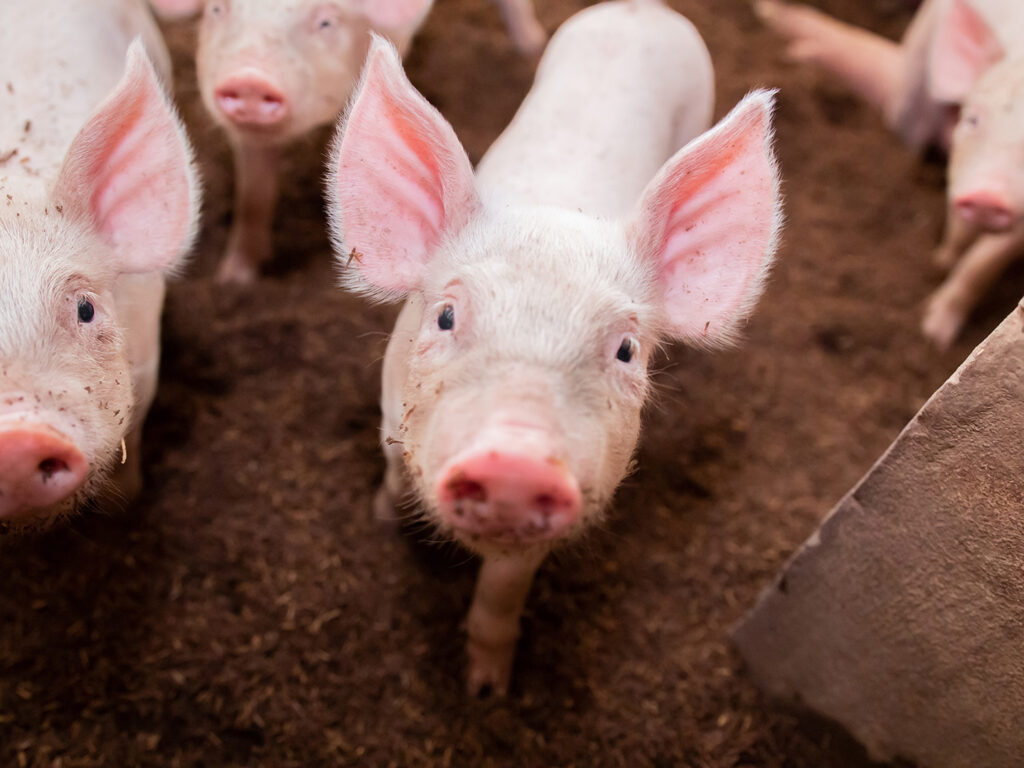Recognizing When Your Pig Has A Skin Condition

As the summer heat continues to simmer, the risk of painful sunburns continues to be a concern as well. This is true for humans but also for animals like pigs, whose skin not only closely resembles that of humans but is more sensitive to dermatological diseases.
Because of this, Dr. Jake Trautmann, a veterinary resident in large animal internal medicine at the Texas A&M School of Veterinary Medicine & Biomedical Sciences, says shade and veterinary care are important for protecting a pig’s skin from sunburns, skin cancer, and other skin conditions that pigs are prone to experience.
Sunburns And Skin Cancer
Sunburns occur when ultraviolet rays from the sun reach the skin and damage skin cells, causing inflammation and redness. Even though sunburns heal naturally, skin cells that remain damaged could become cancerous.
Pigs can experience sunburns and skin cancer when there is a greater chance of sun exposure for an extended period of time, yet Trautmann points out that sunburns are more recognizable in pigs because of similarities to sunburns in people. As a result, owners should swiftly treat the unwanted condition.
“The most common sign of a sunburn is a generalized reddening of the skin, but pigs can also display signs of a sunburn ‘attack,’ when the pain causes them to dip their back downward and squeal while walking, with some even dropping to their stomachs,” Trautmann said. “In some cases, the skin can flake and peel, particularly for pigs who are more sensitive to sunlight in lighter-skinned areas.”
Trautmann encourages owners to keep the sunburned pigs in a shaded area, allowing them time to heal and preventing them from causing excessive skin damage.
If a sunburn is not treated and is given time to worsen, it can cause skin cancer, which can be harder to recognize, unlike sunburns, and requires veterinary care in order to be resolved.
“Squamous cell carcinoma is a common cancer type in pigs and can manifest as raised masses or ulcerated areas (open sores) on the skin,” Trautmann explained. “A skin biopsy – a procedure performed by a veterinarian to remove skin cells for testing – is necessary to confirm a diagnosis of this type of cancer.”
Both sunburns and skin cancer can be prevented by providing pigs with easily accessible shade.
“Pigs that are provided plenty of shade will often use it but will avoid it if it is too much of a chore to get to it,” Trautmann said. “Sometimes they like to bask in the sun, which makes keeping pigs under shade extra difficult. In these cases, the pigs should be enticed to spend as much time in the shade as possible by providing items under the shade that pigs enjoy having around, including food, water bowls, hammocks or other structures they can lay down on, and toys that they play with.”
Other Common Skin Conditions
While preventing sunburns and skin cancer is especially important during sunny weather,
pigs are also at risk for other skin diseases. Trautmann emphasizes that veterinary visits are also required to resolve conditions that cause growths, ulcerated areas, areas that are persistently present for longer than a few days, and areas that grow in diameter from one day to the next.
The most common skin conditions for pigs that will require veterinary care, according to Trautmann, include:
- Diamond skin disease: This bacterial infection can cause raised red or blue rhomboid plaques, or dry raised patches, and progress to peeling red diamond-shaped lesions.
- Dermatitis: Ranging from superficial to deep, this skin condition typically involves organisms already present on the skin that have overpopulated. Greasy pig disease, a bacterial infection that causes brown areas to develop under the arms and in the groin area and spread to the face and head, falls under general dermatitis. Treatment for dermatitis can be as simple as bathing the pig periodically to treating the condition more aggressively with antibiotics and antifungal medications.
- Ectoparasites: This includes hog lice, which are specific to pigs, and mange, which can spread to humans if left untreated. Signs of ectoparasites include rubbing, scratching, hair loss, and visualization of the parasite.
- Ringworm: A fungal infection that causes crusting lesions to expand around the neck and behind the ears. The lesions can often look like those caused by mange, so veterinary intervention is necessary to diagnose and should be treated quickly, as ringworm can spread to humans.
By recognizing various skin conditions of pigs, owners can ensure an appropriate treatment plan is developed with their veterinarian sooner rather than later. Caring for your pig’s skin will keep your pig healthy and happy during the uncomfortably hot weather.
Pet Talk is a service of the College of Veterinary Medicine & Biomedical Sciences, Texas A&M University. Stories can be viewed on the web at vetmed.tamu.edu/news/pet-talk. Suggestions for future topics may be directed to vmbs-editor@tamu.edu.


